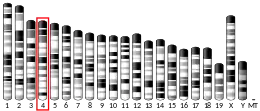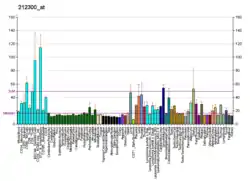| TXLNA | |||||||||||||||||||||||||||||||||||||||||||||||||||
|---|---|---|---|---|---|---|---|---|---|---|---|---|---|---|---|---|---|---|---|---|---|---|---|---|---|---|---|---|---|---|---|---|---|---|---|---|---|---|---|---|---|---|---|---|---|---|---|---|---|---|---|
| Identifiers | |||||||||||||||||||||||||||||||||||||||||||||||||||
| Aliases | TXLNA, IL14, TXLN, IL-14, taxilin alpha | ||||||||||||||||||||||||||||||||||||||||||||||||||
| External IDs | OMIM: 608676 MGI: 105968 HomoloGene: 14062 GeneCards: TXLNA | ||||||||||||||||||||||||||||||||||||||||||||||||||
| |||||||||||||||||||||||||||||||||||||||||||||||||||
| |||||||||||||||||||||||||||||||||||||||||||||||||||
| |||||||||||||||||||||||||||||||||||||||||||||||||||
| |||||||||||||||||||||||||||||||||||||||||||||||||||
| |||||||||||||||||||||||||||||||||||||||||||||||||||
| Wikidata | |||||||||||||||||||||||||||||||||||||||||||||||||||
| |||||||||||||||||||||||||||||||||||||||||||||||||||
Alpha-taxilin also known as interleukin-14 (IL-14) or high molecular weight B-cell growth factor (HMW-BCGF) is a protein that in humans is encoded by the TXLNA gene.[5][6][7]
Interleukin-14 is a cytokine that controls the growth and proliferation of both normal and cancerous B cells.[8] This molecule was also recently designated taxilin.[9] IL-14 induces B-cell proliferation, inhibits antibody secretion, and expands selected B-cell subgroups. This interleukin is produced mainly by T cells and certain malignant B cells.
Gene
In murine models, two distinct transcripts are produced from opposite strands of the il14 gene that are called IL-14α and IL-14β.[10] The il14 locus is near the gene for LCK on chromosome 1 in humans.
References
- 1 2 3 GRCh38: Ensembl release 89: ENSG00000084652 - Ensembl, May 2017
- 1 2 3 GRCm38: Ensembl release 89: ENSMUSG00000053841 - Ensembl, May 2017
- ↑ "Human PubMed Reference:". National Center for Biotechnology Information, U.S. National Library of Medicine.
- ↑ "Mouse PubMed Reference:". National Center for Biotechnology Information, U.S. National Library of Medicine.
- ↑ Nogami S, Satoh S, Tanaka-Nakadate S, Yoshida K, Nakano M, Terano A, Shirataki H (Jun 2004). "Identification and characterization of taxilin isoforms". Biochem. Biophys. Res. Commun. 319 (3): 936–43. doi:10.1016/j.bbrc.2004.05.073. PMID 15184072.
- ↑ Nogami S, Satoh S, Nakano M, Terano A, Shirataki H (Nov 2003). "Interaction of taxilin with syntaxin which does not form the SNARE complex". Biochem. Biophys. Res. Commun. 311 (4): 797–802. doi:10.1016/j.bbrc.2003.10.069. PMID 14623251.
- ↑ "Entrez Gene: TXLNA taxilin alpha".
- ↑ Ambrus JL, Pippin J, Joseph A, Xu C, Blumenthal D, Tamayo A, Claypool K, McCourt D, Srikiatchatochorn A, Ford RJ (July 1993). "Identification of a cDNA for a human high-molecular-weight B-cell growth factor". Proc. Natl. Acad. Sci. U.S.A. 90 (13): 6330–4. Bibcode:1993PNAS...90.6330A. doi:10.1073/pnas.90.13.6330. PMC 46922. PMID 8327514.
- ↑ Nogami S, Satoh S, Nakano M, Shimizu H, Fukushima H, Maruyama A, Terano A, Shirataki H (January 2003). "Taxilin; a novel syntaxin-binding protein that is involved in Ca2+-dependent exocytosis in neuroendocrine cells". Genes Cells. 8 (1): 17–28. doi:10.1046/j.1365-2443.2003.00612.x. PMID 12558796.
- ↑ Shen L, Zhang C, Wang T, Brooks S, Ford RJ, Lin-Lee YC, Kasianowicz A, Kumar V, Martin L, Liang P, Cowell J, Ambrus JL (October 2006). "Development of autoimmunity in IL-14alpha-transgenic mice". J. Immunol. 177 (8): 5676–86. doi:10.4049/jimmunol.177.8.5676. PMID 17015757. S2CID 86324456.
External links
- Human TXLNA genome location and TXLNA gene details page in the UCSC Genome Browser.
Further reading
- Ambrus JL, Pippin J, Joseph A, et al. (1993). "Identification of a cDNA for a human high-molecular-weight B-cell growth factor". Proc. Natl. Acad. Sci. U.S.A. 90 (13): 6330–4. Bibcode:1993PNAS...90.6330A. doi:10.1073/pnas.90.13.6330. PMC 46922. PMID 8327514.
- Andersson B, Wentland MA, Ricafrente JY, et al. (1996). "A "double adaptor" method for improved shotgun library construction". Anal. Biochem. 236 (1): 107–13. doi:10.1006/abio.1996.0138. PMID 8619474.
- Ambrus JL, Pippin J, Joseph A, et al. (1996). "Identification of a cDNA for a human high molecular-weight B-cell growth factor". Proc. Natl. Acad. Sci. U.S.A. 93 (15): 8154. PMC 38894. PMID 8755619.
- Yu W, Andersson B, Worley KC, et al. (1997). "Large-Scale Concatenation cDNA Sequencing". Genome Res. 7 (4): 353–8. doi:10.1101/gr.7.4.353. PMC 139146. PMID 9110174.
- Hartley JL, Temple GF, Brasch MA (2001). "DNA Cloning Using In Vitro Site-Specific Recombination". Genome Res. 10 (11): 1788–95. doi:10.1101/gr.143000. PMC 310948. PMID 11076863.
- Wiemann S, Weil B, Wellenreuther R, et al. (2001). "Toward a Catalog of Human Genes and Proteins: Sequencing and Analysis of 500 Novel Complete Protein Coding Human cDNAs". Genome Res. 11 (3): 422–35. doi:10.1101/gr.GR1547R. PMC 311072. PMID 11230166.
- Simpson JC, Wellenreuther R, Poustka A, et al. (2001). "Systematic subcellular localization of novel proteins identified by large-scale cDNA sequencing". EMBO Rep. 1 (3): 287–92. doi:10.1093/embo-reports/kvd058. PMC 1083732. PMID 11256614.
- Strausberg RL, Feingold EA, Grouse LH, et al. (2003). "Generation and initial analysis of more than 15,000 full-length human and mouse cDNA sequences". Proc. Natl. Acad. Sci. U.S.A. 99 (26): 16899–903. Bibcode:2002PNAS...9916899M. doi:10.1073/pnas.242603899. PMC 139241. PMID 12477932.
- Nogami S, Satoh S, Nakano M, et al. (2003). "Taxilin; a novel syntaxin-binding protein that is involved in Ca2+-dependent exocytosis in neuroendocrine cells". Genes Cells. 8 (1): 17–28. doi:10.1046/j.1365-2443.2003.00612.x. PMID 12558796.
- Ota T, Suzuki Y, Nishikawa T, et al. (2004). "Complete sequencing and characterization of 21,243 full-length human cDNAs". Nat. Genet. 36 (1): 40–5. doi:10.1038/ng1285. PMID 14702039.
- Bouwmeester T, Bauch A, Ruffner H, et al. (2004). "A physical and functional map of the human TNF-alpha/NF-kappa B signal transduction pathway". Nat. Cell Biol. 6 (2): 97–105. doi:10.1038/ncb1086. PMID 14743216. S2CID 11683986.
- Gerhard DS, Wagner L, Feingold EA, et al. (2004). "The Status, Quality, and Expansion of the NIH Full-Length cDNA Project: The Mammalian Gene Collection (MGC)". Genome Res. 14 (10B): 2121–7. doi:10.1101/gr.2596504. PMC 528928. PMID 15489334.
- Wiemann S, Arlt D, Huber W, et al. (2004). "From ORFeome to Biology: A Functional Genomics Pipeline". Genome Res. 14 (10B): 2136–44. doi:10.1101/gr.2576704. PMC 528930. PMID 15489336.
- Mehrle A, Rosenfelder H, Schupp I, et al. (2006). "The LIFEdb database in 2006". Nucleic Acids Res. 34 (Database issue): D415–8. doi:10.1093/nar/gkj139. PMC 1347501. PMID 16381901.
- Gregory SG, Barlow KF, McLay KE, et al. (2006). "The DNA sequence and biological annotation of human chromosome 1". Nature. 441 (7091): 315–21. Bibcode:2006Natur.441..315G. doi:10.1038/nature04727. PMID 16710414.
- Shen L, Zhang C, Wang T, et al. (2007). "Development of autoimmunity in IL-14alpha-transgenic mice". J. Immunol. 177 (8): 5676–86. doi:10.4049/jimmunol.177.8.5676. PMID 17015757. S2CID 86324456.
- Ewing RM, Chu P, Elisma F, et al. (2007). "Large-scale mapping of human protein–protein interactions by mass spectrometry". Mol. Syst. Biol. 3 (1): 89. doi:10.1038/msb4100134. PMC 1847948. PMID 17353931.
This article is issued from Wikipedia. The text is licensed under Creative Commons - Attribution - Sharealike. Additional terms may apply for the media files.




